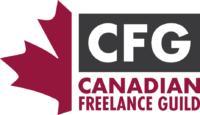On relationships, pie charts, and SEO: How to pitch stories to editors
A guest post by Daniela DiStefano
The Toronto Chapter of the Professional Writers Association kicked off its 2011/2012 Professional Development Series Wednesday night at the Miles Nadal Jewish Community Centre with the season’s first seminar, “Getting Yes: How to Pitch Stories to Editors.”
Chapter president Jaclyn Law hosted the panel of editors, Rani Sheen (FASHION), Megan McChesney (Canadianfamily.ca and 20minutesupperclub.com) and David Fielding (Report on Business), who were on hand to disclose the secrets of an attention-grabbing query letter and their personal experiences building relationships with freelancers.
Publishing students, writing newbies, and seasoned freelancers who braced the heavy rainfall first heard from Rani Sheen, the Australian-born, U.K. transplant turned Toronto resident who edits all travel, health, and culture stories for FASHION. Sheen began with crucial pitching basics (researching the appropriate section editor and ensuring you have the right name and spelling before contacting), and then listed her personal query preferences (email—not phone call—with query in the body—not as an attachment—written in point form free of grammatical and factual errors).
She admitted a first pitch from a new writer would most likely not be commissioned, but emphasized the importance of staying in touch and slowly building a relationship where editors are willing to work with the writer to develop their writing specialties into story concepts. “Have a long-term view of building a relationship that will present continuous writing opportunities, not just a one-off assignment,” Sheen advised. In the end, she said, the quality of the writing will be what wins over the editor to place a writer in their stable of go-to contributors.
Sheen was followed by David Fielding who recently rejoined Report on Business as a senior editor, and was previously a founding editor of The Grid, Toronto’s newest weekly city magazine. Fielding, who specializes in shorter form writing pieces and collaborative editorial packages, told the group about his love for pie charts, graphs, and any other outside-the-box ways to present a story, adding, “It starts with a seed of an idea and from there I like to find the best way to present it.”
Fielding also shared his feelings on the current state of the magazine industry. “Magazines are more editor-driven now than 10 years ago rather than being focused on giving a break to the next great writer,” he said. Fielding thinks this shift poses a challenge for those looking to get into the “closed club of magazines.” Membership does have its privileges, and Fielding said once writers have gained the trust and respect of editors the query-letter game doesn’t have to be played as often. His best advice is for writers to work their network and promote fellow freelancers, and keep up with foreign publications for inspiration: “If you see a great concept in an international magazine, find a way to make it work here.”
The discussion then turned to online pitches as Megan McChesney shared her insights as an executive editor and web producer for St. Joseph Media’s Canadianfamily.ca and 20minutesupperclub.com. McChesney believes in the power of blogs, Twitter, and LinkedIn, and she encouraged the attendees who weren’t already doing all three not to underestimate the value of marketing themselves online as writers. “Showing editors you understand the web, SEO (search engine optimization), and social media will convince them you can create desirable content,” she said.
Many freelancers know online assignments aren’t paying nearly as much as print material, but McChesney said she’s confident this will change as web editorial continues to develop. In the meantime, the greater volume of available assignments for websites in need of a constant flow of “clickable” and attention-grabbing content means writers can still be profitable. Just as online content must be very sharp and interactive, so must be pitches: “Sum up the story in two sentences and show me how you can employ technologies, links, slideshows, or anything else into the piece,” she said.
Find details about the remaining seminars in PWAC’s 2011/2012 Professional Development series here.
Daniela DiStefano is a Toronto PWAC writer, editor, and blogger. Tweet her about writing at @ddeestefano and read about her editorial adventures at Danieladistefano.com.



